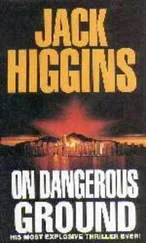“The good news is,” Ho explained, “we don’t have to worry too much about Russian ASW aircraft and ships. The bad news is that Russian subs operate under this all the time. Their detection ranges are reduced as well, but they’re used to it.”
Ho continued to lecture Jerry as the watch continued. “We can surface in this stuff, if we had to.” His tone made it clear that they wouldn’t do it casually. “Later on, it’ll be solid pack ice. We can navigate well enough under it, but we can’t surface through that. Some subs can, but we are not, I repeat, not, ice-capable. Late-flight 688’s have bow planes they can retract, but we’d wreck our fairwater planes if we tried to go through solid ice.”
“So what happens if we have a problem?” Dr. Patterson entered the control room from the forward passageway. She’d overheard the conversation.
Ho asked, “You mean the kind of problem where we might need to surface?” His tone was light, but when he saw her expression, his changed as well. “We’ve got air as long as the reactor is working, and even if the reactor failed, the battery will last long enough to get us out of trouble.”
Patterson waved her hands in the air, as if warding off biting insects. “Please, don’t tell me all the precautions because that means you have to tell me what might go wrong. I’m sure you’ve thought it all through, just like NASA. But things don’t always go well for them, either.”
“That must be why they pay us the big bucks,” one of the enlisted men muttered sarcastically.
Ho shot him a hard look, but said, “We do our best and try to be ready.” He shrugged. He turned back to Jerry “I need you to stay alert, Mr. Mitchell. Our charts of the area are less than complete.”
Patterson rolled her eyes, but Ho saw the gesture and motioned toward the chart. “The path we’re taking, especially as we get closer to Russia, hasn’t been traveled all that often by U.S. boats, and we weren’t able to get current charts from the Russian Hydrographic service or AAA. Look at the numbers that show depth, Doctor. See how they run in lines. You can almost see where every U.S. submarine has passed in these waters by following the soundings they took.”
He pointed to their own track, drawn on the chart. “See where we’ve crossed these blank areas? The mapmakers will use our fathometer logs to fill in some of the empty spots and also check to see if there have been any changes. Because the seafloor up here never stays the same.”
Ho looked over at Jerry, standing by the chart table and listening to the conversation. “Mind the gauges, mister.” Mitchell quickly turned back to his watch station.
Dr. Patterson said, “Thanks for the explanation, although I’m no less nervous for knowing why the charts are incomplete. What are the chances of hitting an underwater mountain or something?”
“We watch the fathometer closely,” Ho assured her, “and if the bottom starts sloping, either up or down, we find out why — and quickly. We have a high-frequency mine-avoidance sonar mounted in the sail and on the lower part of the bow that we can use to look for obstacles ahead of or over us, but it’s an active sonar, so we won’t use it unless we have to.”
“And if we do hit something?” she asked.
Ho shrugged. “Depends on what it is. If we strike something head-on, at speed, it would damage the hull and cause injuries inside, since we’re not wearing seat belts. When USS Ray, an old Sturgeon- class attack boat, hit a sea mountain in the Med at flank speed, her bow looked like a stubbed-out cigar. But she managed to limp home.”
Patterson gave Ho a dirty look that told him that she was tired of constantly hearing about the worst-case scenario. Clearing his throat, he quickly moved on to a more likely possibility. “Our biggest fear is that we could scrape our bottom on a shallow spot that isn’t on our charts. Most likely it would only cause minor damage. There’s almost no chance of rupturing the pressure hull. That’s a couple of inches of HY80 steel. It might limit our speed or make us noisier, which would be a real pain. Of course, if the screw or rudder is damaged, then we’d be in a world of. ” Ho stopped talking, suddenly conscious of Patterson’s exasperated expression.
After a small pause, she changed the subject. “How long until we reach the area?” Patterson asked.
“You mean the dump sites?” Ho asked and she nodded.
Ho rummaged through several rolled-up charts and pulled out the same one she’d shown at the briefing after they’d gotten underway. He noted the location of the first dump site and made a pencil mark on the larger navigational chart. He measured the distance from Memphis’ current position and said, “About fifty-five hours at this speed. We should be in position early on the 26th, the day after tomorrow.”
Patterson nodded again, as she followed along with Ho’s explanation. Then hesitantly, she asked, “What will the Russians do if they find us? I mean specifically.”
Ho thought for a moment and spoke carefully. “Pretty much what we’d do, under similar circumstances. They’ll try to track us, filling the area with as many units as they can. The first to arrive will be aircraft, because they’re faster, but they’ll send surface ships out as well. They probably won’t use subs to chase us, because they don’t want to confuse us with one of their own. If they can pin us down long enough, they’ll talk to us over sonar, ordering us to surface and identify ourselves.”
“Not that we’d do that,” Patterson replied. Her tone didn’t match the certainty of her words.
“No, ma’am, we wouldn’t. We’d just keep evading and eventually break away. We couldn’t continue the mission after that, obviously.”
“They wouldn’t try to shoot at us? To keep us from getting away?”
“Outside territorial waters, firing at us would be an act of war. Of course, they view this whole area as their territory, and if we’re skirting the border, they won’t take an exact navigational fix before they shoot. Ships and planes have been lost before doing what we’re doing.”
Ho stopped for a moment, then repeated himself. “Yes, ma’am. If we’re found near their territorial waters, especially within twelve miles of land, they’ll do their best to sink us, and it’s their backyard. They know these waters better than we do, and they’ll have numbers on their side, we can’t even call for help. We certainly won’t shoot back. They’ve got all the angles. We’ve got stealth and surprise. As long as they don’t detect us, we’ll be just fine.”
“So we really are risking our lives on this mission.” Patterson looked thoughtful.
“Yep. Days of boredom punctuated by brief moments of mind-numbing terror.” He smiled. “But it’s going to be a milk run, right?”
May 26, 2005
Oga Guba, Novaya Zemlya
Memphis continued on a northerly course, slipping farther and farther under the marginal ice zone. Here the ice floes got larger and icebergs became more of a navigation hazard. On more than one occasion, Memphis had to dodge a lumbering giant as it moved slowly southward. As they neared the northern tip of Novaya Zemlya, the polar ice pack appeared as a solid wall on the mine-avoidance sonar. With the exception of a few polynyas, large open cracks in the pack ice, the surface became an impenetrable barrier. Tension grew as the crew took their non-ice-capable boat farther under the polar ice cap.
Within hours of passing under the polar cap, the ambient noise went from a cacophony of cracking ice to almost complete silence. Only the occasional stuttering of a forming ice ridge or the low singing of a distant whale broke the near perfect absence of sound. And while the significantly reduced background noise improved Memphis’ passive sonar capability, it also worked against them, as it would enhance any Russian submarine’s sensors as well. Turning eastward, they rounded the northernmost portion of Novaya Zemlya. Within two watch sections, they were heading south into the Kara Sea, approaching their destination.
Читать дальше












